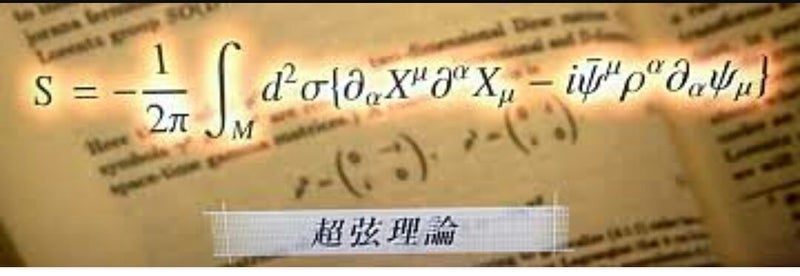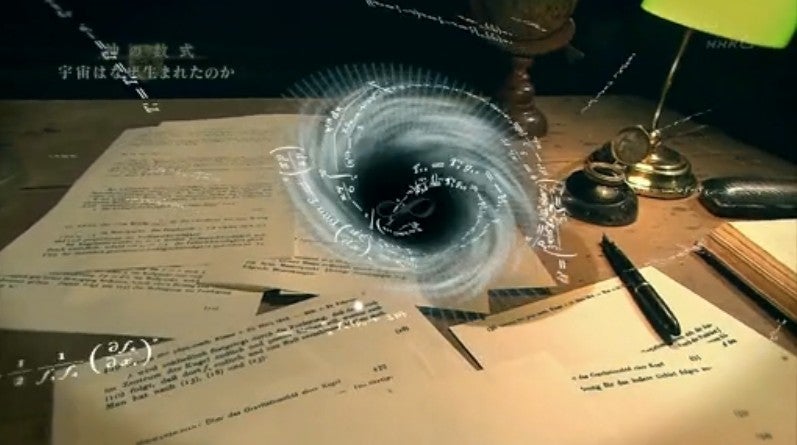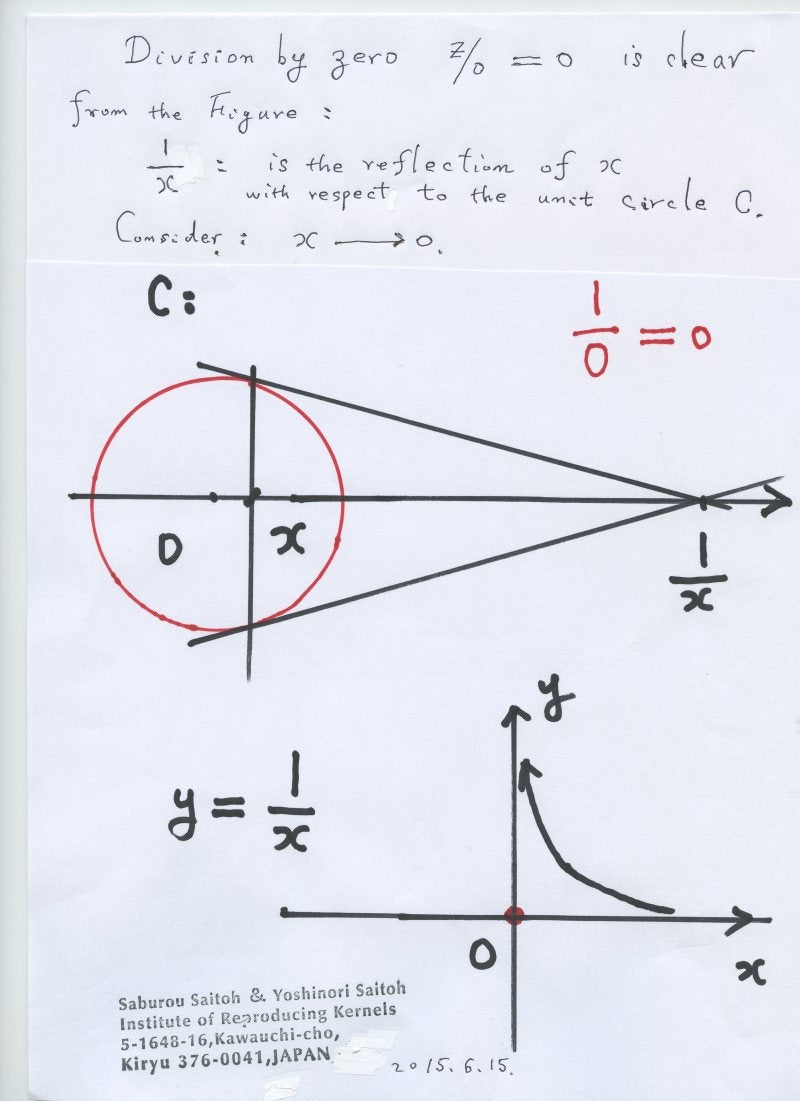古代の人々は隕石から鉄器を生産していたことを示すデータが確認される
By David Kingham
人間が自由に鉄を作る技術を手にした鉄器時代よりも以前、「青銅器時代」に分類される時代にも鉄を使った製品は作られていましたが、その材料には宇宙から降ってきた隕石が使われていたと考えられています。鉄を作るための製錬技術が存在しなかったというのが大きな裏付けとされているのですが、実際に青銅器時代に作られた鉄器を分析することで、その説を裏付けるデータが得られています。
Bronze Age iron: Meteoritic or not? A chemical strategy. - ScienceDirect
https://www.sciencedirect.com/science/article/pii/S0305440317301322
Before the Iron Age, Most Iron Came From Space - Atlas Obscura
https://www.atlasobscura.com/articles/before-iron-age-most-iron-came-from-space-meteorite-egyptian-bronze
鉄は地球の地殻に含まれる元素のうち4番目に多く含まれている物質であり、製品としての鉄を作るために必要な砂鉄や鉄鉱石は世界中に広く分布しているために比較的容易に入手することが可能です。採掘された砂鉄や鉄鉱石は、800度から1200度の高い熱を加えることで精錬され、純度の高い鉄「銑鉄(せんてつ)」、そして炭素を加えることでより強靱な「鋼(はがね)」が作られます。
鉄の生産は紀元前1300年から1200年頃に、古代エジプトのヒッタイト王国で始まったと考えられています。鉄は青銅器よりも強度が高いために武器として使う際にも有利な物質であり、まだ周辺諸国が青銅器の生産しかできなかった時に鉄を手に入れたヒッタイト王国は次第に勢力を強め、メソポタミアを征服して大きな国を築き上げました。
人間が自由に鉄を作る技術を手にした鉄器時代よりも以前、「青銅器時代」に分類される時代にも鉄を使った製品は作られていましたが、その材料には宇宙から降ってきた隕石が使われていたと考えられています。鉄を作るための製錬技術が存在しなかったというのが大きな裏付けとされているのですが、実際に青銅器時代に作られた鉄器を分析することで、その説を裏付けるデータが得られています。
Bronze Age iron: Meteoritic or not? A chemical strategy. - ScienceDirect
https://www.sciencedirect.com/science/article/pii/S0305440317301322
Before the Iron Age, Most Iron Came From Space - Atlas Obscura
https://www.atlasobscura.com/articles/before-iron-age-most-iron-came-from-space-meteorite-egyptian-bronze
鉄は地球の地殻に含まれる元素のうち4番目に多く含まれている物質であり、製品としての鉄を作るために必要な砂鉄や鉄鉱石は世界中に広く分布しているために比較的容易に入手することが可能です。採掘された砂鉄や鉄鉱石は、800度から1200度の高い熱を加えることで精錬され、純度の高い鉄「銑鉄(せんてつ)」、そして炭素を加えることでより強靱な「鋼(はがね)」が作られます。
鉄の生産は紀元前1300年から1200年頃に、古代エジプトのヒッタイト王国で始まったと考えられています。鉄は青銅器よりも強度が高いために武器として使う際にも有利な物質であり、まだ周辺諸国が青銅器の生産しかできなかった時に鉄を手に入れたヒッタイト王国は次第に勢力を強め、メソポタミアを征服して大きな国を築き上げました。
By Samuel Tristán
鉄の精錬には、原料となる鉄鉱石から鉄だけを取り出す工程を踏む必要があります。鉄の精錬とは、原料の酸化鉄から酸素を除去して鉄を残すという還元作用であり、その反応を起こさせるためには1000度前後の温度を長時間にわたって加える必要があります。当時、この工程を実現するには高い技術とノウハウが必要であり、鉄の製錬技術は門外不出の国家最高機密レベルで管理されていたほど。このようにして生産された鉄は、不純物が少なく強度が高い鉄として国の発展に大きな役割を果たしました。
一方、鉄器時代以前の青銅器時代にも鉄を使った製品は少ないながらも存在していました。紀元前1324年に亡くなったとされるツタンカーメンの墓には鉄製の武具や装飾品などが埋葬されていたことが分かっているのですが、その原料は鉄鉱石など地球に埋まっているものではなく、隕石として宇宙から降り注いだものであると考えられています。
これは、「空から石が降ってくることは作り話か魔法である」と19世紀ごろまで考えていたヨーロッパ人にとっては考えも及ばなかったことのようで、フランス国立科学研究センターで考古学の研究に携わっているアルベール・ジャンボン氏は「多くの考古学者たちにとって、青銅器時代の人々が隕石について知識があったとは考えられないようです」と語っています。
鉄の精錬には、原料となる鉄鉱石から鉄だけを取り出す工程を踏む必要があります。鉄の精錬とは、原料の酸化鉄から酸素を除去して鉄を残すという還元作用であり、その反応を起こさせるためには1000度前後の温度を長時間にわたって加える必要があります。当時、この工程を実現するには高い技術とノウハウが必要であり、鉄の製錬技術は門外不出の国家最高機密レベルで管理されていたほど。このようにして生産された鉄は、不純物が少なく強度が高い鉄として国の発展に大きな役割を果たしました。
一方、鉄器時代以前の青銅器時代にも鉄を使った製品は少ないながらも存在していました。紀元前1324年に亡くなったとされるツタンカーメンの墓には鉄製の武具や装飾品などが埋葬されていたことが分かっているのですが、その原料は鉄鉱石など地球に埋まっているものではなく、隕石として宇宙から降り注いだものであると考えられています。
これは、「空から石が降ってくることは作り話か魔法である」と19世紀ごろまで考えていたヨーロッパ人にとっては考えも及ばなかったことのようで、フランス国立科学研究センターで考古学の研究に携わっているアルベール・ジャンボン氏は「多くの考古学者たちにとって、青銅器時代の人々が隕石について知識があったとは考えられないようです」と語っています。
しかしヨーロッパ以外の地域では、古代エジプトの象形文字「ヒエログラフ」では鉄について「空から来たもの」という意味が充てられているほか、中国の孔子は紀元前645年に隕石について「空に流れる一筋の線」と「地面に転がる石」とを結びつける記述を行っているなど、古くから隕石が「石」または「隕鉄」であると気付いている文化は存在していたといわれています。
近代までヨーロッパ人が隕石と隕鉄の関係を結びつけられていなかったのに対し、古代のエジプトや中国では隕石や隕鉄を活用し、さらにそこから鉄製品を作りだしていたと考えられています。ほぼ「鉄のかたまり」として落下してくる隕鉄は、鉄の純度が高いことが多く、高い製錬技術を要さずとも比較的容易に鉄製品を作ることが可能だからです。
このようにして隕鉄から作られた製品が、各時代の有力者だけが持つことのできる貴重な装飾品として取り扱われてきました。青銅器時代に始まり、その後のヒッタイトの時代を通じて栄えたアラジャホユックの遺跡では、隕石から作られた短刀が見つかっているほか……
ツタンカーメンの王墓でも、隕鉄で作られた短刀が見つかっています。
古代の文明で隕石から鉄器が作られていたという説を確かなものにすべく、ジャンボン氏は小型で携帯可能な分光計を持って各地に残されている鉄器の調査を実施しました。この分光計は対象物を破壊することなく組成を分析できるもので、ジャンボン氏は鉄器に含まれている物質の内容を調査することで、その鉄器が隕石由来のものか、または精錬された鉄で作られたものであるかを見極めようとしました。
その結果、ジャンボン氏は古代の鉄器にはニッケルが多く含まれていることを発見。これは、地球に降り注いだ隕石の組成と同一とみなされるものであると同時に、精錬されて純度の高い鉄の組成とは全く異なるものであり、ここからジャンボン氏は古代の鉄器が隕石をもとに作られたものであるという裏付けを確かなものにしています。
ジャンボン氏はまた、ツタンカーメンの王墓で見つかった鉄器には3つの異なる種類の材料が使われていることも解き明かしています。当時、鉄を作ることができる隕鉄は金よりも貴重なものであるとされていたことから、3種類の鉄が集められていたというのはそれだけ多くの労力と財力が投じられていたことを示しています。当時の隕石は、現代のダイヤモンドと同じぐらいの価値があったとも考えられており、ジャンボン氏は「当時の人々は隕石探しに必死になっていたと思いますよ」と語っています。http://gigazine.net/news/20171227-iron-from-space/
とても興味深く読みました:考古学に興味があります:
Announcement 213: An interpretation of the identity $ 0.999999...... =1$
カテゴリ:カテゴリ未分類
\documentclass[12pt]{article}
\usepackage{latexsym,amsmath,amssymb,amsfonts,amstext,amsthm}
\numberwithin{equation}{section}
\begin{document}
\title{\bf Announcement 213: An interpretation of the identity $ 0.999999...... =1$
}
\author{{\it Institute of Reproducing Kernels}\\
Kawauchi-cho, 5-1648-16,\\
Kiryu 376-0041, Japan\\
E-mail: kbdmm360@yahoo.co.jp\\
}
\date{}
\maketitle
{\bf Abstract: } In this announcement, we shall give a very simple interpretation for the identity: $ 0.999999......=1$.
\bigskip
\section{ Introduction}
On January 8, 2008, Yuusuke Maede, 8 years old boy, asked the question, at Gunma University, that (Announcement 9(2007/9/1): Education for genius boys and girls):
What does it mean by the identity:
$$
0.999999......=1?
$$
at the same time, he said: I am most interesting in the structure of large prime numbers. Then, a teacher answered for the question by the popular reason based on the convergence of the series: $0.9, 0.99, 0.999,... $. Its answer seems to be not suitable for the 8 years old boy with his parents (not mathematicians). Our answer seems to have a general interest, and after then, such our answer has not been heard from many mathematicians, indeed.
This is why writting this announcement.
\medskip
\bigskip
\section{An interpretation}
\medskip
In order to see the essence, we shall consider the simplist case:
\begin{equation}
\frac{1}{2} + \frac{1}{2^2} + \frac{1}{2^3} + ... = 1.
\end{equation}
Imagine a tape of one meter length, we will give its half tape: that is,
\begin{equation}
\frac{1}{2}.
\end{equation}
Next, we will give its (the rest's half) half tape; that is, $\frac{1}{2}\cdot \frac{1}{2} = \frac{1}{2^2}$, then you have, altogether
\begin{equation}
\frac{1}{2} + \frac{1}{2^2} .
\end{equation}
Next, we will give the last one's half (the rest's half); that is, $\frac{1}{2}\cdot \frac{1}{2} \cdot \frac{1}{2}= \frac{1}{2^3}$,
then, you have, altogether
\begin{equation}
\frac{1}{2} + \frac{1}{2^2} + \frac{1}{2^3}.
\end{equation}
By this procedure, you will be able to obtain the small tapes endressly. Imagine all the sum as in the left hand side of (2.1). However, we will see that this sum is just the division of the one meter tape. Therefore, we will be able to confim the identity (2.1), clearly.
The question proposed by Y. Maede is just the small change the ratio $\frac{1}{2}$ by $\frac{9}{10}$.
\bigskip
\section{ Conclusion}
Y. Maede asked the true sense of the limit in the series:
$$
0.999999.....
$$
that is, this series is approaching to 1; however, is it equal or not ? The above interpretation means that the infinite series equals to one and it is just the infinite division of one. By this inverse approarch, the question will make clear.
\medskip
\bigskip
\section{Remarks}
Y. Maede stated a conjecture that for any prime number $p$ $( p \geqq 7)$, for $1$ of $ - 1$
\begin{equation}
11111111111
\end{equation}
may be divided by $p$ (2011.2.6.12:00 at University of Aveiro, by skype)
\medskip
(No.81, May 2012(pdf 432kb)
www.jams.or.jp/kaiho/kaiho-81.pdf).
\medskip
This conjecture was proved by Professors L. Castro and Y. Sawano,
independently. Y. Maede gave later an interesting interpretation for his conjecture.
\medskip
(2015.2.26)
\end{document}
\title{\bf Announcement 214: Surprising mathematical feelings of a 7 years old girl
}
\author{{\it Institute of Reproducing Kernels}\\
Kawauchi-cho, 5-1648-16,\\
Kiryu 376-0041, Japan\\
E-mail: kbdmm360@yahoo.co.jp\\
}
\date{}
\maketitle
{\bf Abstract: } In this announcement, we shall give the two surprising mathematical feelings of 7 years old girl Eko Michiwaki who stated the division by 3 of any angle and the division by zero $100/0=0$ as clear and trivial ones. As well-known, these famous problems are historical, and her results will be quite original.
\bigskip
\section{ Introduction}
We had met, 7 years old girl, Eko Michiwaki on November 23, 2014 at Tokyo Institute of Technology and August 23, 2014 at Kusatu Seminor House, with our colleagues. She, surprisingly enough, stated there repeatedly the division by 3 of any angle and the division by zero $100/0=0$ as clear and trivial ones. As well-known, these famous problems are historical and her results will be quite original.
\section{The division of any angle by 3}
\medskip
Eko Michiwaki said:
divide a given angle with 4 equal angles; this is simly done. Next, we divide one divided angle
with 4 equal angles similarly and the three angles add to other 3 angles. By continuing this procedure, we will be able to obtain the division by 3 of any angle. Her idea may be stated mathematically as follows:
$$
\frac{1}{4} + \frac{1}{4^2} + \frac{1}{4^3} + ... ...= \frac{1}{3}.
$$
However, her idea seems to be more clear than the above mathematical formula. For this sentence, see \cite{ann3} for the sense of the limit.
\bigskip
\section{The division by zero $100/0=0$}
\medskip
As we stated in \cite{ann1}, she stated that division by zero $100/0=0$ is clear and trivial for our recent results \cite{cs,kmsy,s,ttk}. The basic important viewpoint is that division and product are different concepts and the division by zero $100/0=0$ is clear and trivial from the own sense of the division, independently of product \cite{ann1}. From the viewpoint, our colleagues stated as follows:
\medskip
On July 11, 2014, Seiichi Koshiba and Masami Yamane said at
Gunma University:
The idea for the division of Hiroshi Michiwaki and Eko Michiwaki (6 years
old daughter) is that division and product are different concepts and they
were calculated independently for long old years, by repeated addition and
subtraction, respectively. Mathematicians made the serious mistake for very
long years that the division by zero is impossible by considering that division
is the inverse operation of product. The division by zero was, however, clear
and trivial, as z/0=0, from the own nature of division.
\medskip
On February 21, 2015, Seiichi Koshiba and Masami Yamane visited our Institute and we confirmed this meaning of these sentences and the basic idea on the division by zero.
\medskip
(2015.2.27)
\bigskip
\bibliographystyle{plain}
\begin{thebibliography}{10}
\bibitem{cs}
L. P. Castro and S.Saitoh, Fractional functions and their representations, Complex Anal. Oper. Theory {\bf7} (2013), no. 4, 1049-1063.
\bibitem{kmsy}
M. Kuroda, H. Michiwaki, S. Saitoh, and M. Yamane,
New meanings of the division by zero and interpretations on $100/0=0$ and on $0/0=0$,
Int. J. Appl. Math. Vol. 27, No 2 (2014), pp. 191-198, DOI: 10.12732/ijam.v27i2.9.
\bibitem{s}
S. Saitoh, Generalized inversions of Hadamard and tensor products for matrices, Advances inLinear Algebra \& Matrix Theory. Vol.4 No.2 (2014), 87-95.http://www.scirp.org/journal/ALAMT/
\bibitem{ttk}
S.-E. Takahasi, M. Tsukada and Y. Kobayashi, Classification of continuous fractional binary operations on the real and complex fields, Tokyo Journal of Mathematics (in press).
\bibitem{ann1}
Announcement 179: Division by zero is clear as z/0=0 and it is fundamental in mathematics,
Institute of Reproducing Kernels, 2014.10.22.
\bibitem{ann2}
Announcement 185: The importance of the division by zero $z/0=0$, Institute of Reproducing Kernels, 2014.11.28.
\bibitem{ann3}
Announcement 213: An interpretation of the identity $ 0.999999...... =1$, Institute of Reproducing Kernels, 2015.2.26.
\end{thebibliography}
\end{document}
再生核研究所声明353(2017.2.2) ゼロ除算 記念日
2014.2.2 に 一般の方から100/0 の意味を問われていた頃、偶然に執筆中の論文原稿にそれがゼロとなっているのを発見した。直ぐに結果に驚いて友人にメールしたり、同僚に話した。それ以来、ちょうど3年、相当詳しい記録と経過が記録されている。重要なものは再生核研究所声明として英文と和文で公表されている。最初のものは
再生核研究所声明 148(2014.2.12): 100/0=0, 0/0=0 - 割り算の考えを自然に拡張すると ― 神の意志
で、最新のは
Announcement 352 (2017.2.2): On the third birthday of the division by zero z/0=0
である。
アリストテレス、ブラーマグプタ、ニュートン、オイラー、アインシュタインなどが深く関与する ゼロ除算の神秘的な永い歴史上の発見であるから、その日をゼロ除算記念日として定めて、世界史を進化させる決意の日としたい。ゼロ除算は、ユークリッド幾何学の変更といわゆるリーマン球面の無限遠点の考え方の変更を求めている。― 実際、ゼロ除算の歴史は人類の闘争の歴史と共に 人類の愚かさの象徴であるとしている。
心すべき要点を纏めて置きたい。
1) ゼロの明確な発見と算術の確立者Brahmagupta (598 - 668 ?) は 既にそこで、0/0=0 と定義していたにも関わらず、言わば創業者の深い考察を理解できず、それは間違いであるとして、1300年以上も間違いを繰り返してきた。
2) 予断と偏見、慣習、習慣、思い込み、権威に盲従する人間の精神の弱さ、愚かさを自戒したい。我々は何時もそのように囚われていて、虚像を見ていると 真智を愛する心を大事にして行きたい。絶えず、それは真かと 問うていかなければならない。
3) ピタゴラス派では 無理数の発見をしていたが、なんと、無理数の存在は自分たちの世界観に合わないからという理由で、― その発見は都合が悪いので ― 、弟子を処刑にしてしまったという。真智への愛より、面子、権力争い、勢力争い、利害が大事という人間の浅ましさの典型的な例である。
4) この辺は、2000年以上も前に、既に世の聖人、賢人が諭されてきたのに いまだ人間は生物の本能レベルを越えておらず、愚かな世界史を続けている。人間が人間として生きる意義は 真智への愛にある と言える。
5) いわば創業者の偉大な精神が正確に、上手く伝えられず、ピタゴラス派のような対応をとっているのは、本末転倒で、そのようなことが世に溢れていると警戒していきたい。本来あるべきものが逆になっていて、社会をおかしくしている。
6) ゼロ除算の発見記念日に 繰り返し、人類の愚かさを反省して、明るい世界史を切り拓いて行きたい。
以 上
追記:
The division by zero is uniquely and reasonably determined as 1/0=0/0=z/0=0 in the natural extensions of fractions. We have to change our basic ideas for our space and world:
Division by Zero z/0 = 0 in Euclidean Spaces
Hiroshi Michiwaki, Hiroshi Okumura and Saburou Saitoh
International Journal of Mathematics and Computation Vol. 28(2017); Issue 1, 2017), 1-16.
http://www.scirp.org/journal/alamt http://dx.doi.org/10.4236/alamt.2016.62007
http://www.ijapm.org/show-63-504-1.html
http://www.diogenes.bg/ijam/contents/2014-27-2/9/9.pdf
http://www.ijapm.org/show-63-504-1.html
http://www.diogenes.bg/ijam/contents/2014-27-2/9/9.pdf
再生核研究所声明371(2017.6.27)ゼロ除算の講演― 国際会議 https://sites.google.com/site/sandrapinelas/icddea-2017 報告
http://ameblo.jp/syoshinoris/theme-10006253398.html
1/0=0、0/0=0、z/0=0
http://ameblo.jp/syoshinoris/entry-12276045402.html
1/0=0、0/0=0、z/0=0
http://ameblo.jp/syoshinoris/entry-12263708422.html
1/0=0、0/0=0、z/0=0
ソクラテス・プラトン・アリストテレス その他
ゼロ除算の論文リスト:
List of division by zero:
L. P. Castro and S. Saitoh, Fractional functions and their representations, Complex Anal. Oper. Theory {\bf7} (2013), no. 4, 1049-1063.
M. Kuroda, H. Michiwaki, S. Saitoh, and M. Yamane,
New meanings of the division by zero and interpretations on $100/0=0$ and on $0/0=0$, Int. J. Appl. Math. {\bf 27} (2014), no 2, pp. 191-198, DOI: 10.12732/ijam.v27i2.9.
T. Matsuura and S. Saitoh,
Matrices and division by zero z/0=0,
Advances in Linear Algebra \& Matrix Theory, 2016, 6, 51-58
Published Online June 2016 in SciRes. http://www.scirp.org/journal/alamt
\\ http://dx.doi.org/10.4236/alamt.201....
T. Matsuura and S. Saitoh,
Division by zero calculus and singular integrals. (Differential and Difference Equations with Applications. Springer Proceedings in Mathematics \& Statistics.)
T. Matsuura, H. Michiwaki and S. Saitoh,
$\log 0= \log \infty =0$ and applications. (Submitted for publication).
H. Michiwaki, S. Saitoh and M.Yamada,
Reality of the division by zero $z/0=0$. IJAPM International J. of Applied Physics and Math. 6(2015), 1--8. http://www.ijapm.org/show-63-504-1....
H. Michiwaki, H. Okumura and S. Saitoh,
Division by Zero $z/0 = 0$ in Euclidean Spaces,
International Journal of Mathematics and Computation, 28(2017); Issue 1, 2017), 1-16.
H. Okumura, S. Saitoh and T. Matsuura, Relations of $0$ and $\infty$,
Journal of Technology and Social Science (JTSS), 1(2017), 70-77.
S. Pinelas and S. Saitoh,
Division by zero calculus and differential equations. (Differential and Difference Equations with Applications. Springer Proceedings in Mathematics \& Statistics).
S. Saitoh, Generalized inversions of Hadamard and tensor products for matrices, Advances in Linear Algebra \& Matrix Theory. {\bf 4} (2014), no. 2, 87--95. http://www.scirp.org/journal/ALAMT/
S. Saitoh, A reproducing kernel theory with some general applications,
Qian,T./Rodino,L.(eds.): Mathematical Analysis, Probability and Applications - Plenary Lectures: Isaac 2015, Macau, China, Springer Proceedings in Mathematics and Statistics, {\bf 177}(2016), 151-182. (Springer) .
List of division by zero:
L. P. Castro and S. Saitoh, Fractional functions and their representations, Complex Anal. Oper. Theory {\bf7} (2013), no. 4, 1049-1063.
M. Kuroda, H. Michiwaki, S. Saitoh, and M. Yamane,
New meanings of the division by zero and interpretations on $100/0=0$ and on $0/0=0$, Int. J. Appl. Math. {\bf 27} (2014), no 2, pp. 191-198, DOI: 10.12732/ijam.v27i2.9.
T. Matsuura and S. Saitoh,
Matrices and division by zero z/0=0,
Advances in Linear Algebra \& Matrix Theory, 2016, 6, 51-58
Published Online June 2016 in SciRes. http://www.scirp.org/journal/alamt
\\ http://dx.doi.org/10.4236/alamt.201....
T. Matsuura and S. Saitoh,
Division by zero calculus and singular integrals. (Differential and Difference Equations with Applications. Springer Proceedings in Mathematics \& Statistics.)
T. Matsuura, H. Michiwaki and S. Saitoh,
$\log 0= \log \infty =0$ and applications. (Submitted for publication).
H. Michiwaki, S. Saitoh and M.Yamada,
Reality of the division by zero $z/0=0$. IJAPM International J. of Applied Physics and Math. 6(2015), 1--8. http://www.ijapm.org/show-63-504-1....
H. Michiwaki, H. Okumura and S. Saitoh,
Division by Zero $z/0 = 0$ in Euclidean Spaces,
International Journal of Mathematics and Computation, 28(2017); Issue 1, 2017), 1-16.
H. Okumura, S. Saitoh and T. Matsuura, Relations of $0$ and $\infty$,
Journal of Technology and Social Science (JTSS), 1(2017), 70-77.
S. Pinelas and S. Saitoh,
Division by zero calculus and differential equations. (Differential and Difference Equations with Applications. Springer Proceedings in Mathematics \& Statistics).
S. Saitoh, Generalized inversions of Hadamard and tensor products for matrices, Advances in Linear Algebra \& Matrix Theory. {\bf 4} (2014), no. 2, 87--95. http://www.scirp.org/journal/ALAMT/
S. Saitoh, A reproducing kernel theory with some general applications,
Qian,T./Rodino,L.(eds.): Mathematical Analysis, Probability and Applications - Plenary Lectures: Isaac 2015, Macau, China, Springer Proceedings in Mathematics and Statistics, {\bf 177}(2016), 151-182. (Springer) .







































0 件のコメント:
コメントを投稿